Instructions to Wear a Hat
August 26, 2009
Baron California Hats could be the most important hat shop in America. Just think about it: a well-known, legendary and sophisticated hat shop in the land of clothing experimentation, Hollywood. This is Hollywood local hat store. So therefore, John Wayne, Crocodile Dundee, Michael and Janet Jackson, Johnny Depp, and so forth are regular clients of this shop.
Also, they have a quite good, slightly tacky website, where you can find the story of the owner, Mr. Mark Maejía, the history of the shop, celebrities’ hat size and, most importantly, the instructions to wear a hat.
This is Hat-wearing for Dummies. Here are some os the tips:
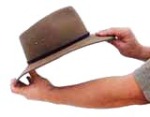
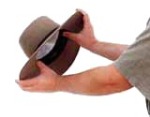
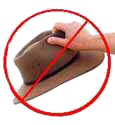
- Do not pick up your hat by “pinching” the crown, either at the top or front. Pinching will flex the felt, and eventually cause a hole or crack to develop in the material.
- Pick up the hat either by the front and back of the brim, or by placing your thumbs inside the leather sweatband at the sides with your fingers just touching the outside of the brim.
- Keep it from dirt and dust. That means to keep it covered in a loosely wrapped plastic bag and sealed with a “tie.” (“Hefty Bags” are great, but don’t buy the ones that come with a “fresh scent” insert.)
- Store them in a professional hat box. Do not put your stored hat under anything in the closet. Even with a sturdy hatbox, it’s a good practice to put the hats on top of the “pile”, or on the floor, with nothing on top of it.
- There are two different types of moth balls used to combat moths. In one type, the main ingredient is naphthalene, and in the other it is paradichlorobenzene. Both chemicals kill moths and moth larvae with the fumes.
- When feeling the hat quite loose, place a “line” of cotton underneath the sweatband, making sure you place a consistent layer all around the hat.
- To clean it, don’t use water. Use a soft bristle brush, especially one that specifically is made for hats.
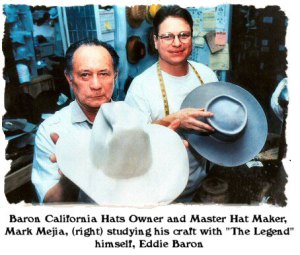
Groucho Marx In The Hat
August 25, 2009
Now here’s why a hat is an element with life: with personality and peculiarities. As we’ve said a million times, in the thirties a hat was an essential part of a man’s clothing. Halessness was synonym of nudity. This is the time that gave birth to the work of comedy legend Groucho Marx, the one and only. In every single one of the Marx Brothers’ works we can notice the importance of hats for this time, but in this hilarious one we realize that a hat wasn’t only an accessory. It was the personification of a man, his face to the world. More than words, this video, performed by brother Harpo Marx, deserves a few laughs. Enjoy.
Wall Street Journal’s “The Latest Hat Craze”
August 17, 2009
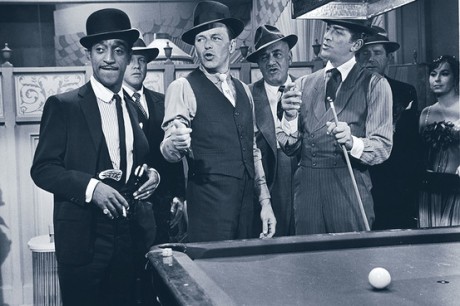
Three years ago, before the purchase of the diary by Rupert Murdoch in 2007, we wouldn’t have had the pleasure to read this type of piece in the Wall Street Journal. It was too narrow, too finance-focused, and maybe a bit too seriousness-obsessed, to publish an article about the history of hats. And even though the development of the piece published this weekend in the Journal is not very pretentious, it is quite satisfying to see that such Institution is telling the story of the indisputable truth this blog is trying to enlarge: hats are back in the ring.
The piece, titled “The Latest Hat Craze”, begins with a nice reference to a not-necessarily current trend, which is the fact that wide brims are not very fashionable.
The so-called stingy-brim hat, with a brim 1½ inches wide, is considered more modern than those carrying standard 2½-inch widths, and straw versions have been big sellers this summer. “Our stingy brims are extremely strong right now,” says Don Rongione, chief executive of Bollman Hat, whose brands include Bailey and Kangol.
Trilbies, soft brimmed hats that sit just above the brow, and hats with an extreme pinch in the front or a colorful band are also popular. “Trilbies make up for approximately 30% of our hat range and sales continue to be strong year on year,”says Topman design director Gordon Richardson. “Most popular is our short-brimmed trilby, which is a young fashion take on a regular trilby.”
Then, it tells the history of the hat:
Among the first hats distinguished by having a brim was the felt petasus or petasos of the Greeks and Romans, which tied under the chin, according to menswear historian Andy Gilchrist. In the 1600s, two types dominated: a low-crowned hat with a broad brim and a high-crowned, round hat made of beaver.
In 1797, English haberdasher John Hetherington made hat history by donning a beaver-fur felt hat so tall he was reportedly arrested for disturbing the peace. He was released and the top hat became the rage, says Alyce Cornyn-Selby, curator of the Hat Museum in Portland, Ore.
In the 19th century, new styles proliferated. There was the emergence of the Panama straw hat: Though they were made in Ecuador, the hat got its name via its passage through Panama, according to Tom Miller’s 1986 book “The Panama Hat Trail.” The hat’s popularity spread when the U.S. Army purchased 50,000 for soldiers to wear during the Spanish-American War and when Gold Rush prospectors used the hats for sun protection, Mr. Miller says.
In 1850 William Coke, a prominent landowner and farmer, commissioned a London hat shop to make a sturdy low-crowned hat to protect his gamekeepers’ heads from overhanging tree branches. Cheaper to produce than top hats, the bowler quickly became the hat of choice for men of all economic backgrounds, Ms. Cornyn-Selby says. In the 1889 version of French play “Fedora,” actress Sarah Bernhardt became the first woman to don one, popularizing the fedora with women.
By the 20th century, movie stars such as Gary Cooper and Humphrey Bogart were popularizing men’s fedoras, which remained in vogue throughout the 40s and 50s.
Then the hats came off. “It’s fair to say [male hat wearing] declined in the 60s as longer hairstyles came into vogue,” says Bollman’s Mr. Rongione, who is also a former head of the Headwear Association. “Some attribute the decline to the automotive industry, the lower roofs in cars. Some say men who returned from World War II didn’t want to wear things on their head” after wearing helmets for so long. “Hatless Jack,” a 2004 book lamenting the decline, examines whether a hatless John F. Kennedy accelerated the trend.
Four decades later, menswear designers were flocking to retro-dandy looks. Giorgio Armani and Prada topped their models with brimmed hats for their Spring/Summer 2005 shows. A year later, brimmed hats turned up on the runways of Dior Homme and Yohji Yamamoto.
Soon, hats were appearing on the head of British rocker Pete Doherty and on the ’60s-era show “Mad Men,” says Michael Fisher, men’s editor at trend forecaster Stylesight. Initially limited to fashion-forward men who would don them with skinny jeans, their popularity has widened to a much broader swath of casual fashion-watchers, reflecting the growing willingness of men to adopt more stylish looks and accessories from the past.
“We wanted to add a touch of sophisticated modern classicism,” says Alessandro Sartori, creative director of Z Zegna, the sibling of Ermenegildo Zegna, which included hats in its Fall 2009 show.
In spite of the quality of the article written by Ray Smith, one of its commentators points out a revealing, yet obvious, fact: the history of the hat is not only the history of men’s hats. True is that women before the ‘60s fashion revolution didn’t wear hats very likely, since it was a symbol of the power and distinction manhood represented in society. However, now that this difference between men and women is extinct, women are an important reference of (to and for) the hat industry. Furthermore, this increasing restoration of the hat wearing is, in part, thanks to women and their outstanding use of it.
So it’s not only that hats are back on the street, as the Journal skillfully argues, but also that they are now an accessory designed for the whole of the population. With peculiarities, yes, with simplicities and differences, but made for every single resident of the world who wants to cover his or her brain in order to stand out over the others.
Oh, and please, don’t miss the slide show complementary to the article.
Tirade of “In Praise of Serious Hats”, By The Ehtiopian Review
August 10, 2009
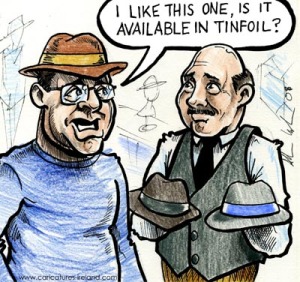
Yesterday, the whimsical Ehtiopian Review published a well-written article about hats; about the history of hats. Overall, Mehret Tesfaye pretends to answer why in the hell hat wearing plunged in two decades. The answer, as expected, is the commonplace we always hear: that President Kennedy’s hatlessness was the trigger of a general rejection to hats. Our opinion? You know it: a simple figure will never be the set off of an old fashion trend. Cultural transformations, especially in the clothing field, change because of rooted phenomena that we have to understand in a broad way. The massiveness and significance of the ‘60s generation has to be seen as a multifaceted, complex element, instead as the manners of a popular figure.
The article also gives us a broad perspective of the meaning of a hat, something the article takes too seriously, too Freudianly. And that is the point we want to touch about the article. We are talking about a good insight to the hat field, a good Hats-for-Dummies guide. And, in those terms, we want to recommend the piece. However, we encountered the fallowing:
A hat has the effect of making the human head a kind of residence. It gives the brain a dome and porch roof, and a strange little portable sense of place. It is a wonderful spot to look out from under, a sort of individual estate. A man feels at home in a hat, established. But wearing a hat is also like having the FBI set you up with a new identity in a different city. It can change you.
The subject here is the serious hat. Not the “fun” hat. Not the Greek fisherman’s hat. The writer Roy Blount Jr. has correctly remarked that no man should ever wear a Greek fisherman’s hat who is not 1) Greek and 2) a fisherman. In the same spirit, it is probably true that no man should wear a cowboy hat who is not 1) a cowboy or 2) President of the United States.
The serious hat is not a masquerade, not a goof and not an announcement that while a man may look like a middle-aged New York City account executive, he harbors a West Texan in his soul, the real interior galoot made manifest in the feathered Stetson that sits on the bar. The serious hat is the opposite of a disguise. It is a working piece of clothes and an adjunct of character.
What is the point in separating serious hat from funny ones? We understand we are not talking about Disney tops and I-Love-New-York caps. And we understand that there is a big difference between a 200-dollar hat and a 15-dollar, bought-in-St-Marks-Place one. But what makes the second an unserious topper?
One of the most important characteristics of a hat is its wearer, its owner, its pal, its one and only partner. In fact, what a hat is made of is its wearer. Therefore, the seriousness of a hat doesn’t depend on the hat as such, but in its landlord. And one can wear it for any purpose; the significance still depends on the wearer’s particular purpose. Hats aren’t only for executives, gangsters or grandpas. No. Hats are for whomever feels that a top would fit well in his or her head. Toppers are an essential particularity of individual style, of individual freedom. Hat wearing is everything but paradigms and dogmas about general, old-fashioned traditions. Hat’s seriousness is one’s choice and as such they should be seen. Period.
What’s a Hat?
July 10, 2009
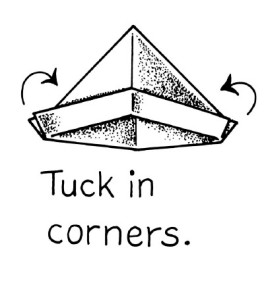
Thank God we were born in the Urban-Dictionary generation. What’s a hat? Well, let’s ask God himself. Here are 10 Definitions.
1.
(British) slang for condom
wear a hat or you may catch something
2.
To everyone else: A covering for the head.
To parents: A magical cham that prevents people from getting colds.
Mom: Where’s your hat?
Me: I wear a hood
Mom: That’s not good enough
(translation: nothing but a hat can ward off the evil of colds)
4.
Hat is a more intense degree of “hot.”
Many things are hot, but very few are hat.
JB, “How’s is going Phil?”
PJ, “Pretty hat.”
5.
An acronym for Hair Absence Treatment
Hey that bald guy is trying to cover his baldness with a HAT
6.
Yet another name for a Jewish person wearing a yamacha.
Adam Sandler is one funny hat.
7.
South Florida slang for a Jewish person, usually used when they can overhear you; similar to the use of Canadian for blacks.
Caller: Which Black Friday line are you at?
You: Best Buy in Boca Ration
Caller: Oh man I bet there’s tons of-
You: Yep. Hats everywhere, man.
Caller: Oh well at least you’re not at Wal-Mart in Lauderhill, it’s like fucking Toronto over here if you know what I mean.
8.
The result of millions of hamsters being released into the New York subways and mating with the enormous rats to create a new breed of super-rodents.
Upon entering the hat store, the old man’s left foot was voraciously bitten off by a mob of angry.
9.
Description of a female that has Hips, Ass and Thighs. (HAT)
Damn that girl has some HAT on her!
The HAT on that chick is rediculous!
10.
Acronym for “Hot Asian Tang.”
See Asian Lover
I was at the mall the other day and I seen the best HAT ever.
Damn, did you see that HAT.
So last night I ran into this HAT, she ws a nice girl…
Carla Bruni and Queen Elizabeth’s Monopoly
June 16, 2009
Tonight is The Roots at the Highline Ballroom, Chelsea, New York. Summer is around the corner, and today is the day to launch this blog, along with Prince William, Sarkozy and the top elite of the post-Sinatra hat generation. Welcome, this is the monopoly of elegance.
Allow me to explain all the whimsicalness.
Today, June 16th—while Irving Penn, the fashion-photography monster, is celebrating his 92nd birthday—, the Ascot Racehorse in Berkshire, England, kicks off with no single other purpose than enjoy style and tradition the way it has to be, with gin-tonics and top-breed horses. Here, we are not talking about one of the most sophisticated events in the world. This goes beyond that. Instead, we are talking about the place and time that host the most important racehorse of all times, a competition whose total prize money on offer is £3.5 million. Its point, however, rather than decorating the best horse and Jockey in the world, is gathering the style mankind has been trying to achieve all this, say, four hundred-years of western fashion evolution. The single, most important guest, our dear best friend: hats.
And our second best friend, Queen Elizabeth, the world’s most obsessive hat collector. Not today, but maybe tomorrow, her collection will be the topic of a post in this Blog. Today, for the moment, lets just toast with her and her entourage; among others, Carla Bruni, the recently named by British tabloid The Sun as the most important hat wearer in the world, over Madonna and Victoria Beckham, all of them nevertheless future object of reporting in this space.
What is this blog about? All the previous deeply developed with classic–and hopefully classy–journalism. Which means, in fact, summer, funky music, ballrooms, style, celebrities, and, most of all, the world that can be explained through one single piece of fashion decoration, hats.
Bienvenu.